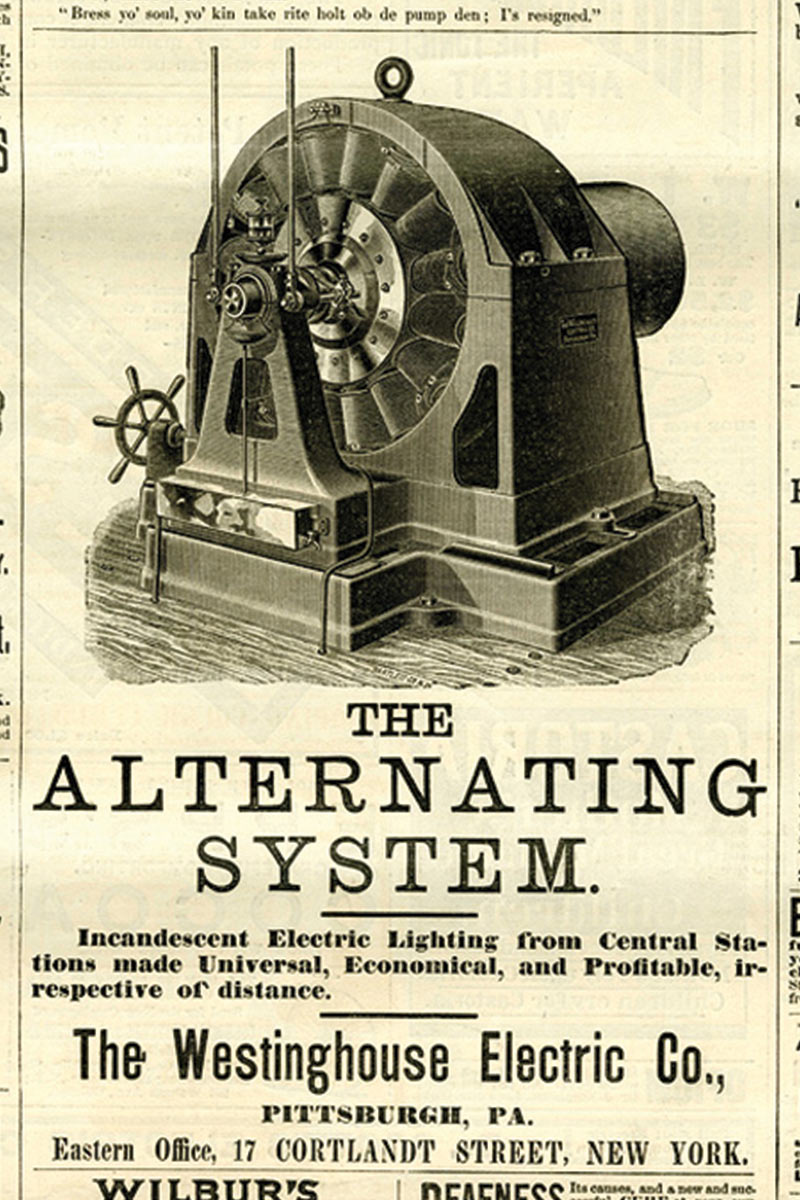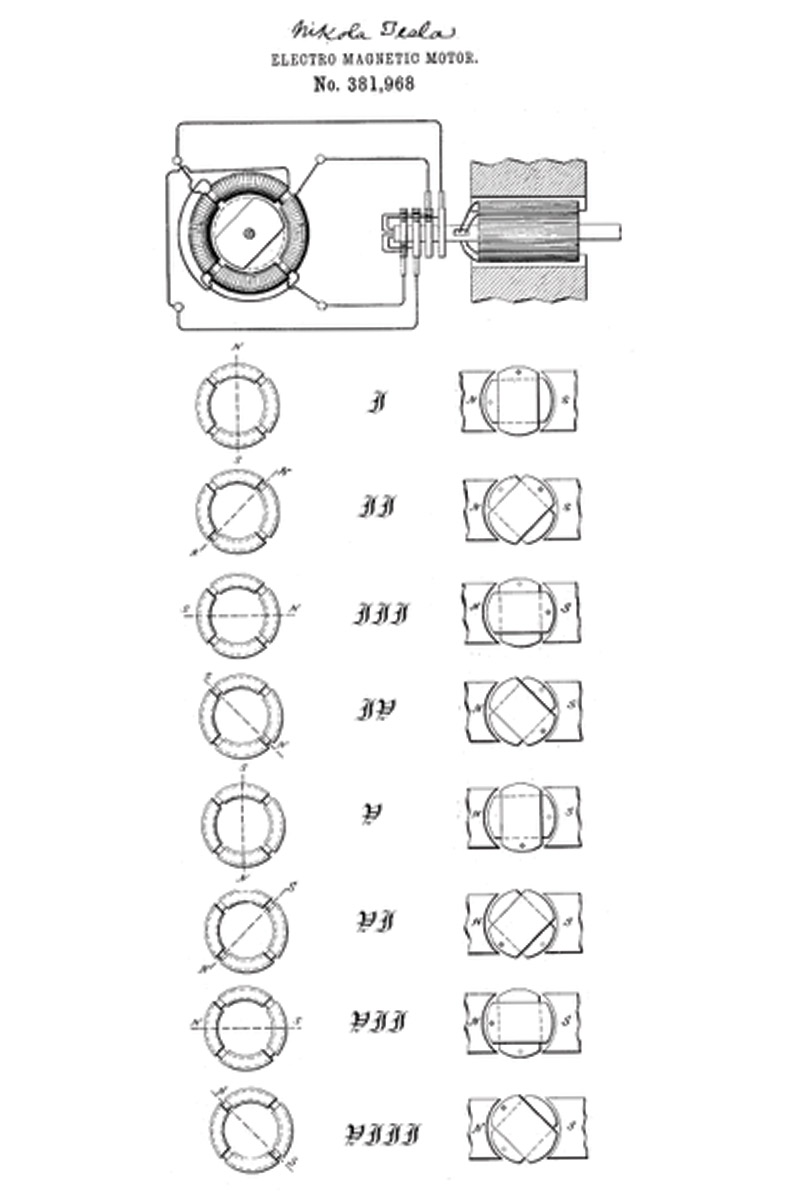Tesla's AC generator
Tesla’s AC generator produced electricity by electromagnetic induction. To generate electricity in a coil, either the coil should rotate with respect to a magnetic field, or a magnetic field should rotate with respect to the coil. The alternators in this power station used the latter approach. The armature coils remained stationary as the rotating magnetic flux associated with the rotor induced electricity in them.
During operation, the rotor, a cylindrical piece surrounded in magnets, spun inside the stator that held a fixed set of conductive copper wiring. The movement of the magnets over the wiring is what ultimately created electricity as electrons were pushed back and forth by the magnetic field passing over them.
To produce 25 Hz electricity at this power station, a 10-pole rotor inside the alternator spun at 250 revolutions per minute (RPM). This RPM induced a centrifugal force on polls of the rotor. Generally, the more poles there are, the more area to spread out the force. The alternators could also operate with 12 poles, which is considered ideal winding and was used on future systems.




